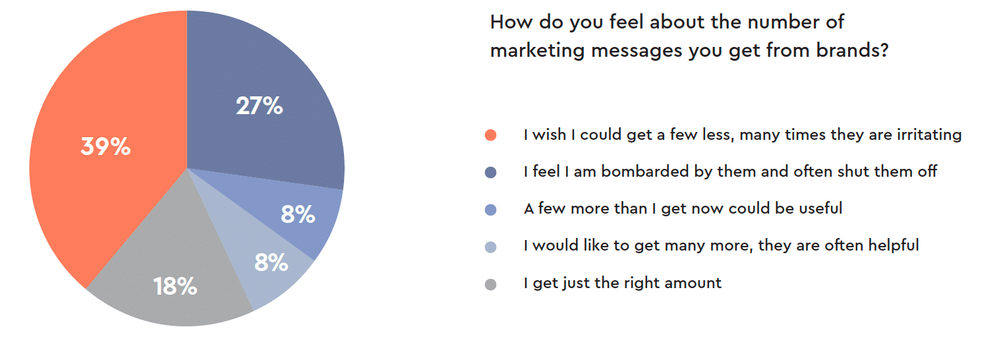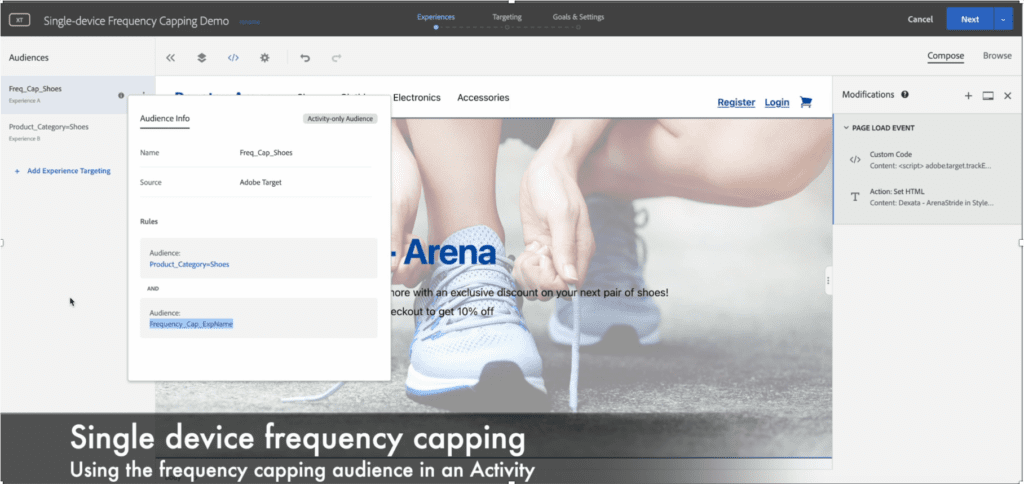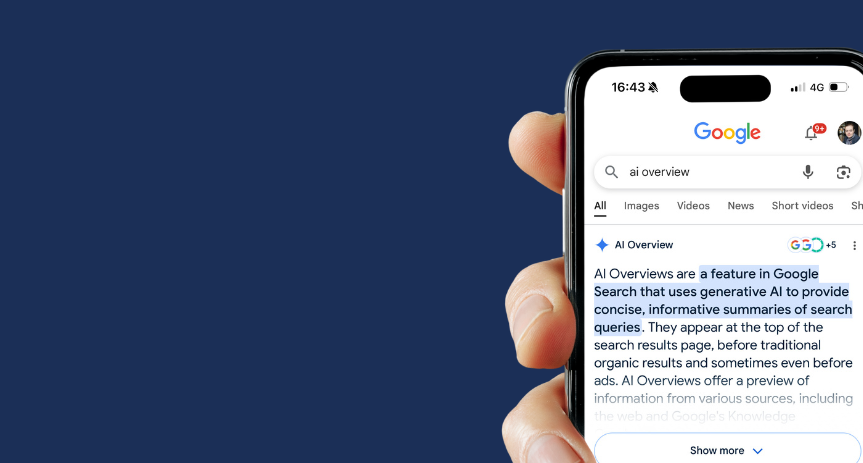Art of Balance: Overcoming Marketing Fatigue Using Frequency Capping

As part of my role as Adobe Target community advisor, I consistently strive to assist fellow members of the Adobe Target community in addressing their queries and concerns on this platform. One particular question, in various forms, has cropped up repeatedly: “How can I ensure that an experience is displayed a limited number of times?” Recognising the significance of this query related to frequency capping , I have attempted to create a response that encompasses both the technical and business aspects of the solution. The aim is to provide valuable insights to all Adobe Target practitioners, empowering them to enhance customer experiences by effectively implementing frequency capping to fix marketing fatigue.
What is Marketing fatigue?
Lets first understand the commercial challenge we are answering through this article – Marketing fatigue.
Marketing fatigue (also called ad fatigue in advertising world), is a phenomenon where consumers become disengaged or annoyed due to excessive and repetitive exposure to marketing messages or content. It occurs when individuals feel overwhelmed by the sheer volume of advertisements, emails, social media posts, or other promotional content they encounter.
With the surge in digital consumerism during and after the pandemic, marketers have seen a substantial increase in messaging opportunities. However, recent research from Optimove suggests that this influx of communication is beginning to overwhelm consumers.
Two-thirds of consumers (66 percent) surveyed for the firm’s 2023 Consumer Marketing Fatigue survey want fewer marketing messages, and 27 percent feel they are bombarded by marketing messages.
As these cookies have traditionally played a crucial role in tracking user activities across the web, their diminishing effectiveness will lead to a more fragmented view of customer identities. With users engaging across multiple devices and channels, the absence of a universal tracking mechanism will contribute to disjointed customer profiles.

How does Frequency capping overcome Marketing-fatigue?
Frequency capping is a technique used in digital marketing to limit the number of times a specific marketing message is shown to the same visitor within a defined time period. In simpler terms, it’s about preventing your audience from being bombarded by the same experience over and over again.
Here are some business benefits of Frequency capping:
Enhanced User Experience: Imagine seeing the same ad every time you visit a website. It can become annoying and even drive potential customers away. Frequency capping ensures that your message reaches your audience, but not to the point of irritation.
Optimising Marketing ROI: Your marketing budget is a precious resource. Without frequency capping, a significant chunk of your budget could be spent on repeatedly targeting the same users. By limiting marketing exposure, you maximise your marketing spend’s efficiency.
In case of Adobe Target, frequency capping means controlling the delivery of a specific experience by applying appropriate audiences. The next section explains this in more detail.
As these cookies have traditionally played a crucial role in tracking user activities across the web, their diminishing effectiveness will lead to a more fragmented view of customer identities. With users engaging across multiple devices and channels, the absence of a universal tracking mechanism will contribute to disjointed customer profiles.
Interested in learning more?
Dexata Academy has more technical details on Setting up Frequency Capping using Adobe Target
How to set Frequency capping using Adobe Target?
Setting up Frequency capping in Adobe Target typically requires four steps:
Step 1: Pass a unique experience identifier: The first step is to notify Adobe Target that our experience has been interacted with (either viewed or clicked). This us done by adding a code-snippet to the experience.
If you are using AT.js, then its done by using the trackEvent() method. Here’s sample code for how to use this method.
adobe.target.trackEvent({
"mbox": "experience-experience_interaction",
"params": {
"experience_id": "your_experience_identifier"
}
});In case of WebSDK, please use sendEvent method as given below. Please ensure that the renderDecisions value is set as false.
window.alloy("sendEvent", {
"renderDecisions": false,
decisionScopes: ["__view__"],
"xdm": {
"web": {
"webPageDetails": {
"experience_id": "your_experience_identifier"
}
}
}
})Irrespective of the method you use, its crucial to ensure uniqueness of the experience identifier to ensure multiple experiences are not updating single identifier.
Step 2: Create a profile-script to keep the count of experience views: Create a new profile-script which stores the count of how many times a particular experience has been viewed. Please note that you’ll need to setup a separate profile-script for every experience you want to frequency-cap.
Depending upon whether you use AT.js or WebSDK, profile script should be coded in different ways.
// Profile script code for AT.js
// Step 1: get the existing value stored in the profile script
// if the value does not exist, then set the profile-script value to 0
var countat = user.get('your_profile_script_name')||0;
// Step 2: check that this call is result of an interaction with your experiences
// by checking the name of the mbox and mbox=parameter containing experience-identifier
if(mbox.name == "experience_interaction" && mbox.param("experience_id") == "your_experience_identifier") {
// if its an interactiion with your experience then increase the profile-script value by 1
countat = countat + 1;
}
return countat;// Profile script code for WEB SDK
// Step 1: get the existing value stored in the profile script
// if the value does not exist, then set the profile-script value to 0
var countat = user.get('your_profile_script_name')||0;
// Step 2: check that this call is result of an interaction with your experiences
// by checking the value of mbox-parameter containing experience-identifier
if(mbox.param("web.webPageDetails.experience_id") == "your_experience_identifier") {
// if its an interactiion with your experience then increase the profile-script value by 1
countat = countat + 1;
}
return countat;Step 3: Create an audience corresponding to the profile-script: Create a new audience, using “Visitor Profile” attribute-type. During the audience-creation workflow, your profile-script should be available in the first drop-down. Then you may use a static value corresponding to how many times you want to show the experience. In our example, we have used 2.

Step 4: Use the audience in your activity: As the last step, you add newly created audience to the experience you want to frequency-cap.

Limitations of above approach
While the above mentioned solution to achieve Frequency capping in Adobe Target is quite powerful and enables marketers to apply this to individual experience level, we need to be wary of a couple of limitations while implementing this.
- Increased need for profile-script governance: The approach requires a profile-script to be configured for every experience you want to frequency-cap. Without a proper governance process, it’s easy to get dozens of such profile-scripts created which may impact Adobe Target’s performance.
- Impact of delivered but not “visible” experiences: Adobe Target allows marketers to run multiple activities on a single page. If these experiences are trying to update the same part of the page, it may lead to race-condition and activity-priority comes into play to resolve it. As a result, it may be possible that an experience associated with a lower priority activity is executed, however is not visible because it gets overwritten by a higher priority activity. In such cases, please check such conflicts while setting up the activities and resolve those to ensure a better user-experience.
Conclusion
Frequency capping is about finding the right balance in digital marketing. It enhances the user experience, optimises marketing-spend, and prevents marketing-fatigue, leading to better engagement and, ultimately, higher conversion rates. As the digital marketing landscape continues to evolve, mastering the art of frequency capping is a must for marketers looking to make a meaningful impact.
Want to enable unified customer profiles for your organisation? Get in touch.







